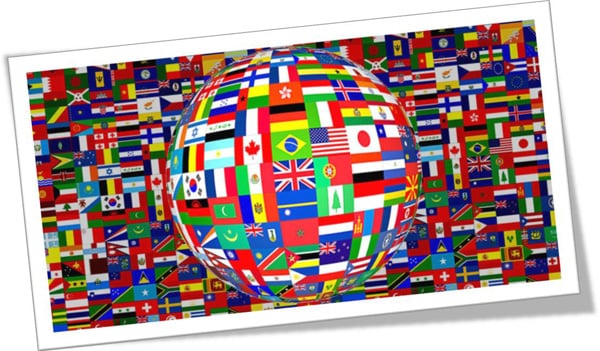Exploring the Trend of Multi-lingual Website Designing
The challenges of web designing can’t be ignored. As a web designer, you might have to encounter clients who demand a multi-lingual website as an attempt to expand their business reach. Well, designing a multi-lingual website is indeed one of the most challenging projects and if you’re able to deliver a multi-lingual website, you’re a true professional. Whether you’re designing a multi-lingual site for your client or intend to create your own multi-lingual portfolio, there are some points that need to be looked into. Today, through this post, I’ll be highlighting some important aspects related to multi-lingual website designing.

It’s a bit harder to design multi-lingual websites
Multi-lingual website designing means additional efforts on the part of web designer. In other words, as a web designer you need to invest an additional amount of time and effort into designing a website that can be accessed in multiple languages. Here’s a list of some technical issues that might crop in while designing a more international website:
- Font size – If you’ve been working on non-latin language-based website then this might appear as an issue. In order to design websites that can get converted into Chinese or Arabic, you need to keep the font size bigger so as to make it readable for the visitors.
- Word length – This is yet another issue that might bother you while designing a multiple-language website. Since different languages contain letters of varying lengths, you need to be extra cautious in designing the website that can read all letters in a brilliant way. For example, designing the website for Chinese will require you to maintain a shorter word length as compared to the usual English version.
In addition to the issues explained above, some other technical hindrances tend to come in your way towards building a perfect multi-lingual websites. Let’s take a look at these technical hindrances:
- Confusion in language detection. This poses as a major technical hindrance for every web designer who is supposed to design a website that is available in multitude of languages. There’s a common confusion as to whether you should detect the most suitable language for your visitors or simply display the default language. If you’re ready to go with the former method, then you’ll need to choose an accurate language detection method that loads the language in accordance to the visitor’s web browser or location.
- Using multiple languages on different pages. Most of the web designers tend to work on a multi-lingual website by using different languages on different web pages. Doing this serves no advantage, rather it just confuses Google and you tend to lose your site’s search engine ranking.
- Complications in structuring each language’s URL. This is yet another major technical issue that’s being faced by every multi-lingual website designer. He/she tends to use a complex structure for different linguistic versions of the website.
Are there any solutions to the above issues?
Yes, absolutely. When there’re problems, there are solutions. The same goes for the above-defined issues as well. Here’s a list of solutions you may choose for combating the technical issues faced during multi-lingual website designing:
- Use UTF-8 encoding.Well, if you’re designing a website that requires multiple language support then it is recommended to use UTF-8 encoding. UTF-8 is a character set that is supported by numerous software applications and operating systems, making sure no characters disappear from your site once you switch from one language to another.
To use UTF-8 encoding, all you need to do is add the following meta tag in the head of your web page: <meta charset=”UTF-8″ /> - Use one language per page by declaring a default language. In order to prevent Google from getting lost while indexing your multi-lingual website, make sure to declare a default language for your site. You can do this by adding the following code to your web page’s html tag:
- Choose a well-defined URL structure. In order to combat the complexities of the website’s URL structure, make sure to use a structure that is similar to this one: http://www.example.com/en/article-title
- Make the search language-compatible. There are two types of visitors, the ones who browse the site and ones who search for specific information by inserting related keywords/phrases etc. Considering the expectations of the latter visitor category, make sure the search results are displayed in the language chosen by the respective visitor.
Conclusion
Well, the purpose of this blog was obviously not to discourage you for designing multi-lingual website, but to bring under your notice some of the easily recognizable challenges that the project brings along. All you need to do is stay well-informed about all these issues/challenges and multi-lingual website designing will turn out to be a fun activity.
Have you ever designed a multi-lingual website? If yes, do share your experiences and issues you have faced that have been missed out unintentionally in this write-up.

